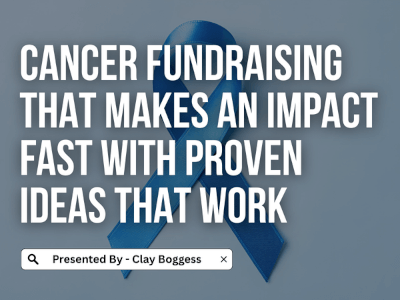
Your guide to a successful discount card fundraiser.
Discount card fundraising can work quite well for the right group. However, students need to be able to sell the features and benefits of their cards. For example, they may need to point out certain businesses that potential customers may like and when the card expires.
And because organizations custom-order their cards up front, the main objective is to sell off their inventory as quickly as possible and not have any leftovers. Therefore, establishing a good selling strategy with your students will be necessary. What follows is our discount card-selling tips for school groups:
1. Establish a Card Sales Goal
Based on how much money your group needs:
- Divide the group goal by the number of sellers.
- Determine how many cards to distribute to each seller.
- For example, if you need to raise $2,500 and have 50 sellers, each seller will need to sell ten cards (50 sellers x 10 cards x $5 profit/card = $2,500).
2. Assure Discount Card Goal Compliance
Establish your selling expectations from the beginning:
- Set a minimum number of cards each seller is expected to sell and make this mandatory if possible.
- If requiring your students to sell a minimum number is impossible, consider an incentive program that rewards those who meet or exceed the goal.
- For instance, you might consider hosting a pizza party for those sellers who sell at least "x" cards.
3. Meet with Your Group
Have a kickoff meeting to discuss goals and expectations:
- Discuss how to approach potential customers.
- Offer tips on how to sell the card like:
- Telling people that the card will pay for itself after the first 3-4 uses.
- Instruct your sellers to hand the card to prospective customers and ask, "I'll bet you already go to some of these restaurants, don't you?" When they respond with "Yes," follow with, "If you had one of these discount cards, you'd save money each time you visit. Would you like to continue paying their regular prices or be able to get a better deal?" When they say, "A better deal," it follows with, "The cards are only $10, and you'd be helping our group by buying a card. Would you like one card for yourself and a second card for someone else in your family so they can save money too?"
4. Set a Selling Time Limit
Establishing a turn-in date for the money:
- This will help create a sense of urgency.
- Most groups require the money to be turned in 1-2 weeks after their kickoff meeting.
- Consider having an "early-bird prize" for those who turn in their money by a particular date. This could be as simple as letting them keep a discount card for themselves.
- Realize that whatever turn-in date you set, you will have stragglers that turn in their money late. So be prepared to deal with that situation.
5. Track Your Discount Card Fundraiser
Ensure that your fundraiser stays on course:
- Use our sales tracking sheet.
- Don't hand out any cards to anyone whose name is not on the tracking sheet.
- Make sure also to record how many cards are issued to each seller.
- Don't issue any additional cards until the money has been turned in for the initial cards.
- Consider having each seller sign or initial that they have received "x" number of cards to sell.
- Have your sellers acknowledge they are responsible for turning in the correct card amount.
- Check-in with your sellers periodically during your sale to check on their progress.
6. Offer Incentives for Selling
Make sure money is returned promptly:
- We recommend offering additional incentives to your sellers to help make the selling process fun and competitive.
- Additional incentives can help speed up your fundraiser.
- Offering incentives can increase your sales as you may need to reorder more cards.
- You can use incentives that don't cost any money. Public recognition is often more motivating than prizes.
- Don't issue selling rewards until all the money has been turned in.
7. Address Unsold Discount Cards:
Have a plan in place to deal with any returned cards:
- Remember that you don't have to sell every card to make a profit. Your goal is to maximize your earnings as much as possible. Once you've sold enough discount cards to return your initial investment, your breakeven point, every additional card sold, is 100% profit.
- If you have sellers who bring back unsold discount cards, we recommend using our tips on how to resell unsold discount cards.
See our discount card fundraiser.
Author Bio
Clay Boggess has been designing fundraising programs for schools and various nonprofit organizations throughout the US since 1999. He’s helped administrators, teachers, and outside support entities such as PTAs and PTOs raise millions of dollars. Clay is an owner and partner at Big Fundraising Ideas.



